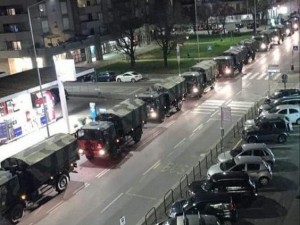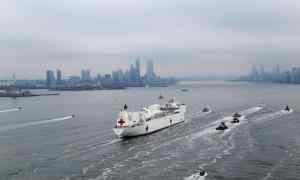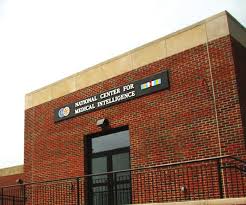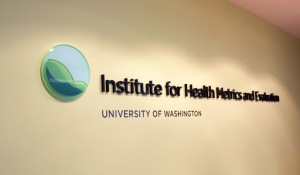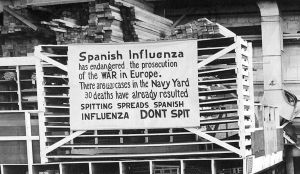

“Fully vaccinated.”
Today’s the day. Wednesday, June 16, 2021. Two weeks have passed since my second dose of Moderna COVID-19 mRNA vaccine was administered.
Our parents generation had V-E Day or Victory in Europe Day, the public holiday celebrated on May 8, 1945 to mark the end of the Second World War in Europe, while V-J Day or Victory over Japan Day was celebrated Sept. 2, 1945 in the United States, Aug. 14-15, elsewhere by our Allies. But as he witnessed the first detonation of a nuclear weapon on July 16, 1945, a piece of Hindu scripture from the Bhagavad Gita ran through the mind of Robert Oppenheimer: “Now I am become Death, the destroyer of worlds.”
Our generation now has its own individual V-Day: Vaccinated against COVID-19 Day.
Some 675,000 Americans died over three years between January 1918 and December 1920 during the three waves of the Spanish Flu pandemic when the country’s population was 103.2 million. Today, the population of the United States is more than 331 million. The world population in 1918 was about 1.8 billion, compared to about 7.8 billion people today.
COVID-19 is the second-deadliest plague in modern history, having killed as of June 15 more than 600,000 people in the United States in slightly more than 16 months. The COVID-19 death toll stands at about 3.8 million case fatalities worldwide. It’s unusual clinical course of unpredictability in patients, ranging from an asymptomatic infection the person isn’t even aware of to death in a hospital intensive care unit (ICU), often with no good explanation available even after age and comorbidities are accounted for, makes it all the more terrifying. Some diseases are so deadly death is almost certain. COVID-19 is not like that. Rather it is like playing a macabre viral version of Russian Roulette. Maybe. Maybe not.
At the same time, effective messenger Ribonucleic Acid (mRNA) and viral vector vaccines offering full protection against COVID-19, some of which were relegated to the scientific research backburner since their initial discoveries and on-again, off-again preliminary work in the mid-1980s, were brought to fruition in warp speed in 10 months rather than the normal 10 years it takes to bring a new vaccine to market. Despite the COVID-19 vaccines impressive efficacy and good safety record to date, I’m under no illusion that we the vaccinated are not all part of a population level experiment. We surely are. Not something I would have said in advance I’d be anxious to sign up for, but as the Scottish philosopher James Boswell’s Life of Samuel Johnson, quotes in 1777 the latter to say: “Depend upon it, sir, when a man knows he is to be hanged in a fortnight, it concentrates his mind wonderfully.”
And, of course, as the last 18 months have unfolded, all of this has been accompanied by an “infodemic” of social media and real life (if there is still that separation for some) sometimes accidental misinformation but more often deliberate disinformation from modern-day armchair Barbarian Visigoths, who revel in the propagation of their anti-mask and/or anti-vax propaganda. Until they die of COVID-19. It’s not like we didn’t have a heads-up of what to expect on this front in the battle against COVID-19. In 1998, Andrew Wakefield and 12 of his colleagues published a case series in the Lancet, which suggested that the measles, mumps, and rubella (MMR) vaccine may predispose to behavioural regression and pervasive developmental disorder in children. Despite the small sample size (n=12), the uncontrolled design, and the speculative nature of the conclusions, the paper received wide publicity, and MMR vaccination rates began to drop because parents were concerned about the risk of autism after vaccination.
All pretty remarkable, since the name COVID-19 didn’t exist prior to Feb. 11, 2020 when the World Health Organization (WHO) named what had been provisionally known as Novel Coronavirus 2019-nCoV and first reported from Wuhan, China on Dec. 31, 2019. In terms akin to chaos theory, think of it perhaps as the as the Wuhan butterfly effect, regardless of whether the origins of COVID-19 should someday prove to be natural or the result of a gain-function experiment gone awry resulting in an accidental lab leak at the Wuhan Institute of Virology. The Coronavirus Study Group (CSG) of the International Committee on Taxonomy of Viruses, which is the entity within the International Union of Microbiological Societies, founded in 1927 as the International Society for Microbiology, and responsible for developing the official classification of viruses and taxa naming (taxonomy) of the Coronaviridae family, proposed the naming convention SARS-CoV-2 for what would become known as COVID-19. The World Health Organization, perhaps finding the recommended name a tad too resonant politically to SARS from the not-so-distant past, opted instead for the official name COVID-19.
Human beings live in the realm of nature, they are constantly surrounded by it and interact with it. Man is part of nature, a humbling reminder for all of us to what we so quickly forget 15 minutes after the last pandemic ends. Until the next one begins.
The first time I wrote on what would soon be characterized as the current pandemic was on Jan. 23, 2020. A week later on Jan. 30, WHO Director General Tedros Adhanom Ghebreyesus, an Ethiopian biologist, following the recommendations of the WHO Emergency Committee, declared that the Novel Coronavirus 2019-nCoV outbreak constituted a Public Health Emergency of International Concern (PHEIC). On March 11, the WHO elevated the viral outbreak to the status of full-blown pandemic.
The headline to my Jan. 23, 2020 post wondered, “The fire this time? Pandemic prose, and waiting and watching for the ‘big one’ (The fire this time? Pandemic prose, and waiting and watching for the ‘big one’ | soundingsjohnbarker (wordpress.com) In a matter of weeks, there was no question the question mark could be dropped and the sentence turned into a categorical statement; it was indeed the fire this time, and the “big one” had arrived as an unwanted New Year’s Eve 2019 guest.
You can also follow me on Twitter at: https://twitter.com/jwbarker22


